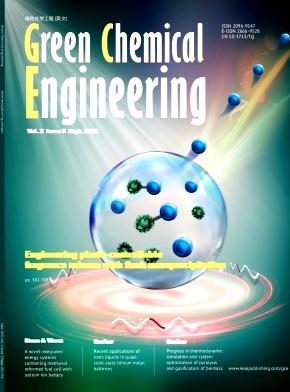COSMO-RS screening of organic mixtures for membrane extraction of aromatic amines: TOPO-based mixtures as promising solvents
IF 9.1
Q1 ENGINEERING, CHEMICAL
引用次数: 0
Abstract
Aromatic amines are crucial in pharmaceuticals, but their synthesis is challenging due to unfavorable reaction equilibria and the use of costly, environmentally unfriendly methods. This study presents a membrane extraction (ME) process for in situ product removal (ISPR) of aromatic amines. Using a supported liquid membrane (SLM), -methylbenzylamine (MBA) and 1-methyl-3-phenylpropylamine (MPPA) were separated from isopropyl amine (IPA). Conductor-like Screening Model for Real Solvents (COSMO-RS) was employed to screen over 200 organic mixtures, identifying twelve mixtures based on trioctylphosphine oxide (TOPO), lidocaine, and menthol as solvent candidates, due to their hydrophobicity. These mixtures were analysed for critical solvent properties including density, viscosity, hydrophobicity, and H-bonding interactions. ME tests showed TOPO-thymol had the highest solvent residual and selectivity. Moreover, TOPO-thymol demonstrated solute fluxes of 9.0±3.0 g/(m2 h) for MBA, 16.5±5.4 g/(m2 h) for MPPA, and 0.7±0.3 g/(m2 h) for IPA, with selectivity values of 12.4±0.8 for MBA/IPA and 22.8±1.4 for MPPA/IPA. Compared to undecane, which had lower selectivity values of 6.9±0.8 for MBA/IPA and 10.1±1.3 for MPPA/IPA, TOPO-thymol showed superior selectivity, indicating its promise as an extractant for ME applications.

cosmos - rs筛选用于膜萃取芳胺的有机混合物:topo基混合物是有前途的溶剂
芳香胺在药物中是至关重要的,但由于不利的反应平衡和使用昂贵的,对环境不友好的方法,它们的合成具有挑战性。介绍了一种膜萃取法原位去除芳香族胺的工艺。采用负载式液膜(SLM)从异丙胺(IPA)中分离α-甲基苄胺(MBA)和1-甲基-3-苯丙胺(MPPA)。采用真实溶剂类导体筛选模型(cosmos - rs)对200多种有机混合物进行筛选,确定了12种基于三辛基膦氧化物(TOPO)、利多卡因和薄荷醇的混合物作为候选溶剂,因为它们具有疏水性。分析了这些混合物的关键溶剂性质,包括密度、粘度、疏水性和氢键相互作用。代谢能试验表明,TOPO-thymol具有最高的溶剂残留量和选择性。TOPO-thymol对MBA的溶质通量为9.0±3.0 g/(m2 h),对MPPA的溶质通量为16.5±5.4 g/(m2 h),对IPA的溶质通量为0.7±0.3 g/(m2 h),对MBA/IPA的选择性为12.4±0.8,对MPPA/IPA的选择性为22.8±1.4。十一烷对MBA/IPA的选择性值为6.9±0.8,对MPPA/IPA的选择性值为10.1±1.3,与十一烷相比,topo -百里香酚具有更强的选择性,表明其在ME提取中的应用前景。
本文章由计算机程序翻译,如有差异,请以英文原文为准。
求助全文
约1分钟内获得全文
求助全文
来源期刊

Green Chemical Engineering
Process Chemistry and Technology, Catalysis, Filtration and Separation
CiteScore
11.60
自引率
0.00%
发文量
58
审稿时长
51 days
 求助内容:
求助内容: 应助结果提醒方式:
应助结果提醒方式:


